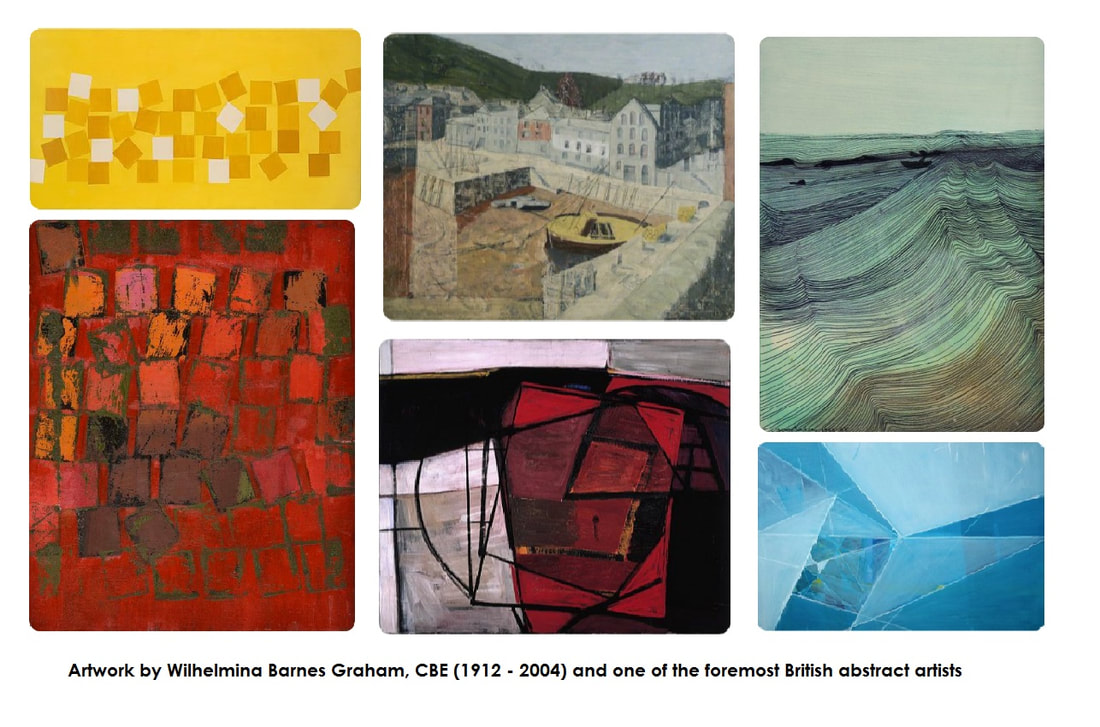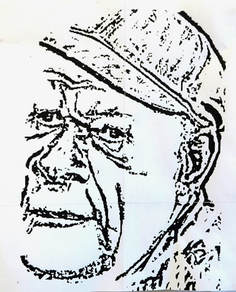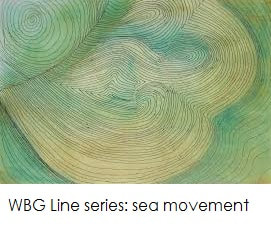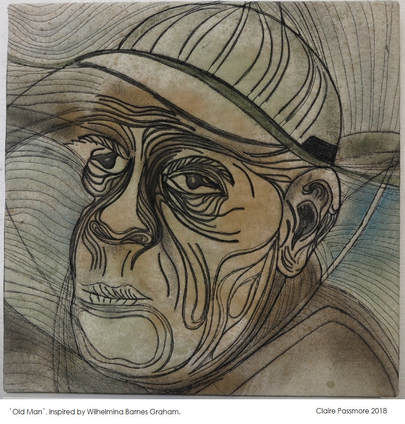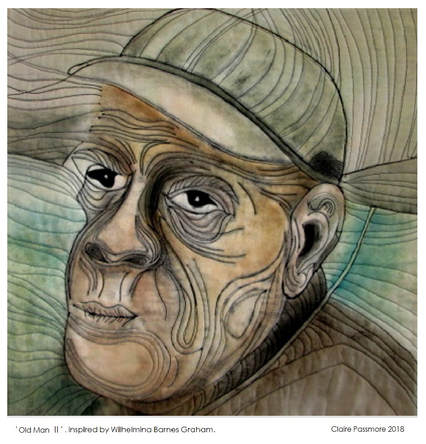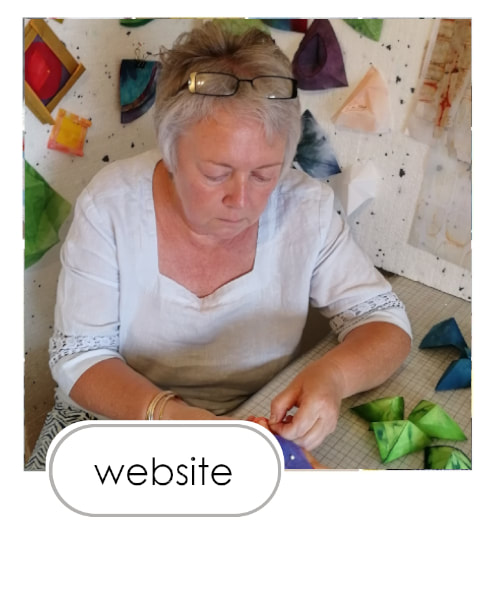|
Following on from my last blog, this is the second of my 16 inch square quilts made in my 'Works inspired by artists' series for the group '12 by the Dozen'. This time the artist chosen was Wilhelmina Barnes Graham, chosen by Linda Bilsborrow, and what a great choice it was. You can find out more about her by clicking here.
Below is a tiny taste of her work.
The inspiration for this next quilt comes from my study of her drawings, and in particular, her 'Line' series. One of my favourites is titled 'Music of the Sea' which you can see by clicking here. I find the simplicity of this work fascinating. Simply by the repeated use of hundreds of thin lines Barnes-Graham was able to capture enormous energy and movement in her drawings and is a perfect example of 'rhythm' in design terms. That is what I wanted to explore.
As I wanted to create a portrait again I chose a sketch I made several years ago of a man I once knew named Paul. Taking this drawing as a starting point I drew several new versions of Paul's face, concentrating on using only thin lines to mark the contours of the face. The progression below shows what I did. I deliberately did not use as many lines as Barnes-Graham as I wanted to leave space to add more lines with the quilting stitches later. I must say, it does remind me of a map! Once I was happy with the drawing I made a series of mono prints by reversing the image and drawing onto the back of a piece of white cotton fabric that was laid onto a sheet of glass covered in oil based printing ink. It is a technique I love to use and have described several times in the past. (Click here for a recent blog post describing the technique)
As I had a lot of ink on the plate I decided to make several prints. One of the early prints was especially dark and the lines lost much of their definition (too much wet ink on the printing plate) so I ended up turning the fabric over and using the back of the print which was much more subtle.
Once the ink was fully dry (about 4 days) I used Markal oilsticks and a dry toothbrush to add hints of colour to the fabric. I used turquoise, Wedgewood blue and muddy grey colours, similar to those Barnes-Graham used in 'Sea Movement' (see image below; click here for more details of this piece) Once it was dry (another few days) I free motion quilted further thin lines with black thread, echoing and enhancing the lines already in the drawing .
He looks quite a sombre old man, don't you think? I am not entirely happy with the bottom left corner of the piece, I think I got it wrong when I added that diagonal line coming up from his chin area. I also don't like the dark grey shading I added in the very bottom left corner, continuing from his jersey. In an attempt to understand better what I had done I decided to make a second piece to address the problems, which you can see below.
It is mostly similar, but the colours are a little more vibtant, the lines thinner and less dark and the bottom left corner has been tidied up, I think it is a much better version - and he doesn't look so glum either.
I am happy to say that 'Old Man II' is currently on his way to New Zealand (via South Africa) to be part of an exhibition by members of '12 by the Dozen' at the National Quilt Symposium in Auckland, 1st to 6th October 2019. Further details can be found by clicking here. Many thanks to Rosemary Rush for organising this fabulous opportunity for us. For my next blog post I will share the third and latest quilt I have made, inspired by the work of German artist, Gabrielle Münter, chosen by Uta Lenk. Thanks for reading.
|
|
